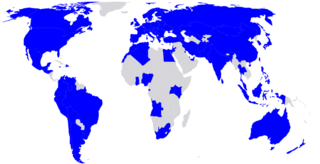Beauty
Around the World, Who Spends Time on Their Looks and Why?
A 93-country study with 93,000 participants.
Posted October 25, 2022 Reviewed by Abigail Fagan
Key points
- Hundreds of researchers conducted a worldwide study on people's attractiveness-enhancing behaviors.
- The authors collected data from 93,158 participants in 93 countries and found that beauty-enhancing behavior is a universal phenomenon.
- Key predictors of this behavior included social media use, belief in traditional gender roles, relationship status, and age.
This post is first-authored by Marta Kowal. (To cite this post: Kowal and Al-Shawaf, 2022.)
Around the world, who spends more time on appearance enhancement, and why?
Recently, psychologist Marta Kowal led an international team of hundreds of researchers in an attempt to answer these questions. The study took place in 93 countries and involved 93,158 participants.

Kowal and colleagues defined “enhancing one’s physical attractiveness” as one of the following activities: applying makeup or using other cosmetics, grooming one’s hair, putting effort into clothing style, caring for body hygiene for the express purpose of enhancing attractiveness, exercising, following a specific diet, or any other activity geared toward improving one's physical attractiveness.
The results show that 99% of the sample spent more than 10 minutes a day caring for their physical appearance. On average, people in the study spent a whopping four hours a day enhancing their appearance.
Kowal and her colleagues found that beauty-enhancing behavior varied across both genders and countries. On average, women spent 23 minutes more than men improving their physical appearance per day. The five countries where improving one’s looks was the most time-consuming activity were Tunisia, Thailand, Ghana, Morocco, and Nigeria. The five countries where people spent the least time improving their looks were Nepal, Switzerland, Finland, Denmark, and Norway.
Kowal and her team also tested which country- and individual-level variables most strongly predicted beauty-enhancing behaviors. The results show that time spent on social media was the strongest predictor of time spent improving one’s looks. (But keep in mind that due to the correlational nature of the data, all the regular caveats about causality apply).
The second strongest predictor was belief in traditional gender roles. The more someone adhered to traditional gender roles, the more time they spent caring for their physical appearance. Interestingly, this finding applied to both women and men.
Romantic relationship status emerged as another important predictor. The study found that people currently dating spent the most time enhancing their attractiveness. Self-declared singles devoted far less time to such activities, as did married individuals.
Finally, age was also an important predictor. In this 93-country study, the youngest and the oldest participants devoted the largest amount of time to enhancing their appearance, with middle-aged people being the least prone to engaging in such behaviors. However, the authors point out that there’s a lot that we still don’t know—is it the case that the youngest and the oldest people have more free time than busy middle-aged individuals, who are preoccupied with their children, professional careers, and aging parents? Or are other factors driving the results? More research is needed to answer this and other follow-up questions.
Overall, the researchers found that attractiveness-enhancing behaviors were universal in their 93-country sample, with 99% of people spending more than 10 minutes per day. Other key study takeaways include the finding that time spent on social media was the number one predictor of time invested in enhancing one’s looks, and the fact that the predictors of attractiveness-enhancing behaviors were largely the same across countries.
To read the full peer-reviewed study by Kowal and colleagues, click here.


